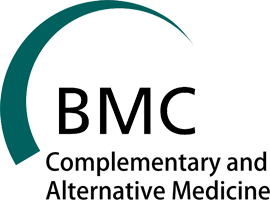
Depuis plusieurs années, nous analysons de manière approfondie l’historique, les fondements physio-pathologiques, les outils diagnostics et l’efficacité spécifique de diverses thérapies ou méthodes, pratiquées notamment par les kinésithérapeutes : fasciathérapie méthode Danis Bois, biokinergie ou encore ostéopathie crânienne. En décembre 2016, nous vous annoncions notre publication, non sans encombre, d’une partie de nos travaux sur l’ostéopathie crânienne dans Plos One. Nous nous sommes à nouveau soumis·es au processus de relecture par les pairs pour publication dans une revue scientifique indexée. Cet article porte cette fois sur l’ostéopathie viscérale. Se trouve ci-dessous la référence de la publication (en accès libre), son résumé, ainsi qu’une petite note à l’intention de nos lectrices et lecteurs qui attendent avec impatience la mise à disposition de notre rapport complet sur l’ostéopathie viscérale.
Référence de l’article
Albin Guillaud, Nelly Darbois, Richard Monvoisin, Nicolas Pinsault. Reliability of diagnosis and clinical efficacy of visceral osteopathy: a systematic review. BMC Complementary and Alternative Medicine. 2018 18:65
Lire ou télécharger la publication en PDF ici.
Résumé (en anglo-américain)
Il est possible d’utiliser Deep-L pour traduire ce texte.
Background
In 2010, the World Health Organization published benchmarks for training in osteopathy in which osteopathic visceral techniques are included. The purpose of this study was to identify and critically appraise the scientific literature concerning the reliability of diagnosis and the clinical efficacy of techniques used in visceral osteopathy.
Methods
Databases MEDLINE, OSTMED.DR, the Cochrane Library, Osteopathic Research Web, Google Scholar, Journal of American Osteopathic Association (JAOA) website, International Journal of Osteopathic Medicine (IJOM) website, and the catalog of Académie d’ostéopathie de France website were searched through December 2017. Only inter-rater reliability studies including at least two raters or the intra-rater reliability studies including at least two assessments by the same rater were included. For efficacy studies, only randomized-controlled-trials (RCT) or crossover studies on unhealthy subjects (any condition, duration and outcome) were included. Risk of bias was determined using a modified version of the quality appraisal tool for studies of diagnostic reliability (QAREL) in reliability studies. For the efficacy studies, the Cochrane risk of bias tool was used to assess their methodological design. Two authors performed data extraction and analysis.
Results
Eight reliability studies and six efficacy studies were included. The analysis of reliability studies shows that the diagnostic techniques used in visceral osteopathy are unreliable. Regarding efficacy studies, the least biased study shows no significant difference for the main outcome. The main risks of bias found in the included studies were due to the absence of blinding of the examiners, an unsuitable statistical method or an absence of primary study outcome.
Conclusions
The results of the systematic review lead us to conclude that well-conducted and sound evidence on the reliability and the efficacy of techniques in visceral osteopathy is absent.
Plus d’informations
Cet article est tiré d’un rapport que nous avons réalisé à la demande du Conseil national de l’ordre des masseurs-kinésithérapeutes (CNOMK). En plus du contenu de la publication dans BMC Complementary and Alternative Medicine, sont présentés dans ce rapport les résultats d’une enquête exhaustive sur l’histoire de l’ostéopathie viscérale, la description précise de ses fondements théoriques, et l’analyse de la validité scientifique de ces mêmes fondements1. Ce rapport est élaboré à partir d’une méthodologie similaire à celle employée dans le rapport sur l’ostéopathie crânienne, mais améliorée par notre expérience, nos erreurs et l’aide des outils de la collaboration Cochrane en constante évolution. Nous avons terminé et rendu le rapport au CNOMK en octobre 2016. Ce travail n’a pas encore été rendu public.